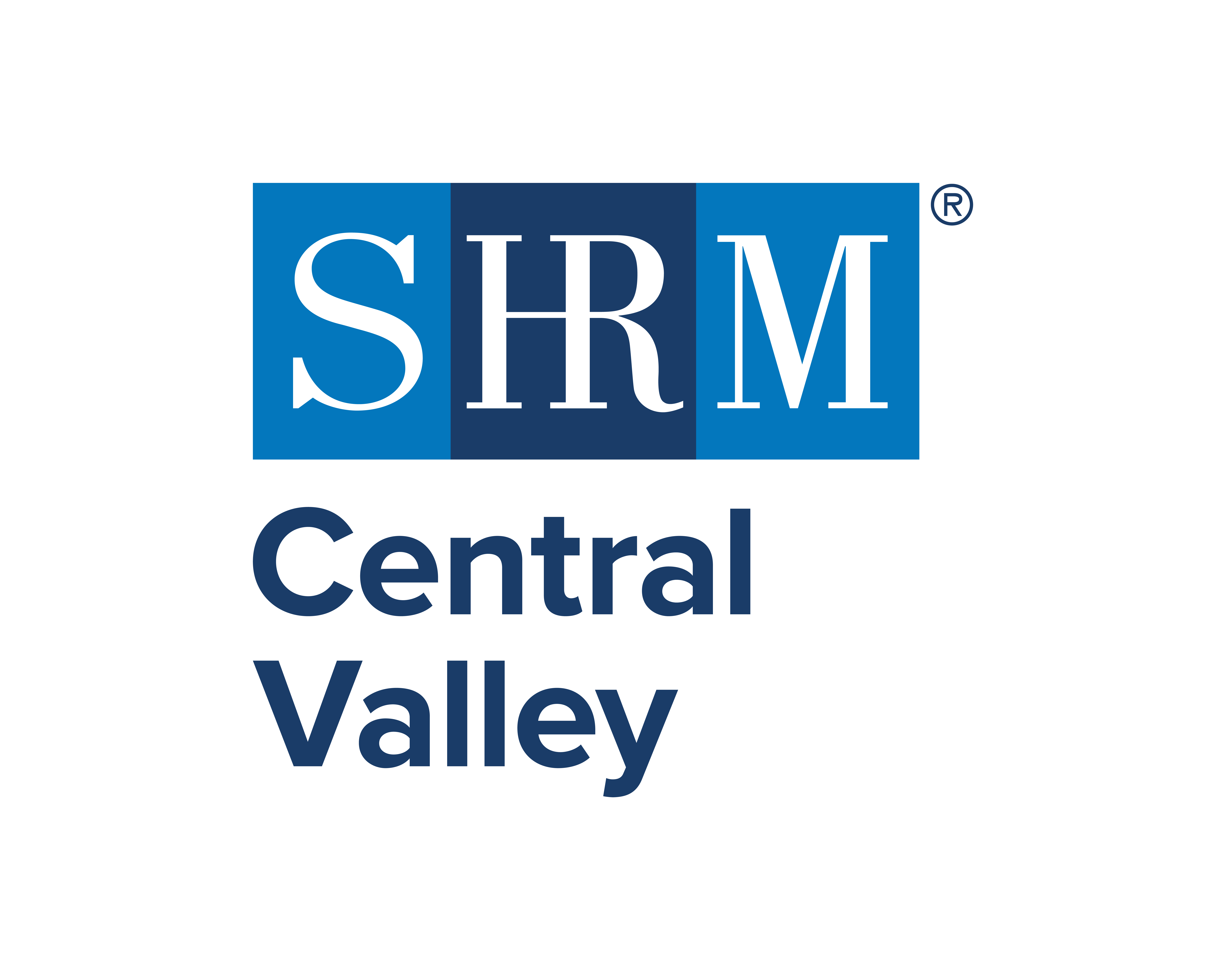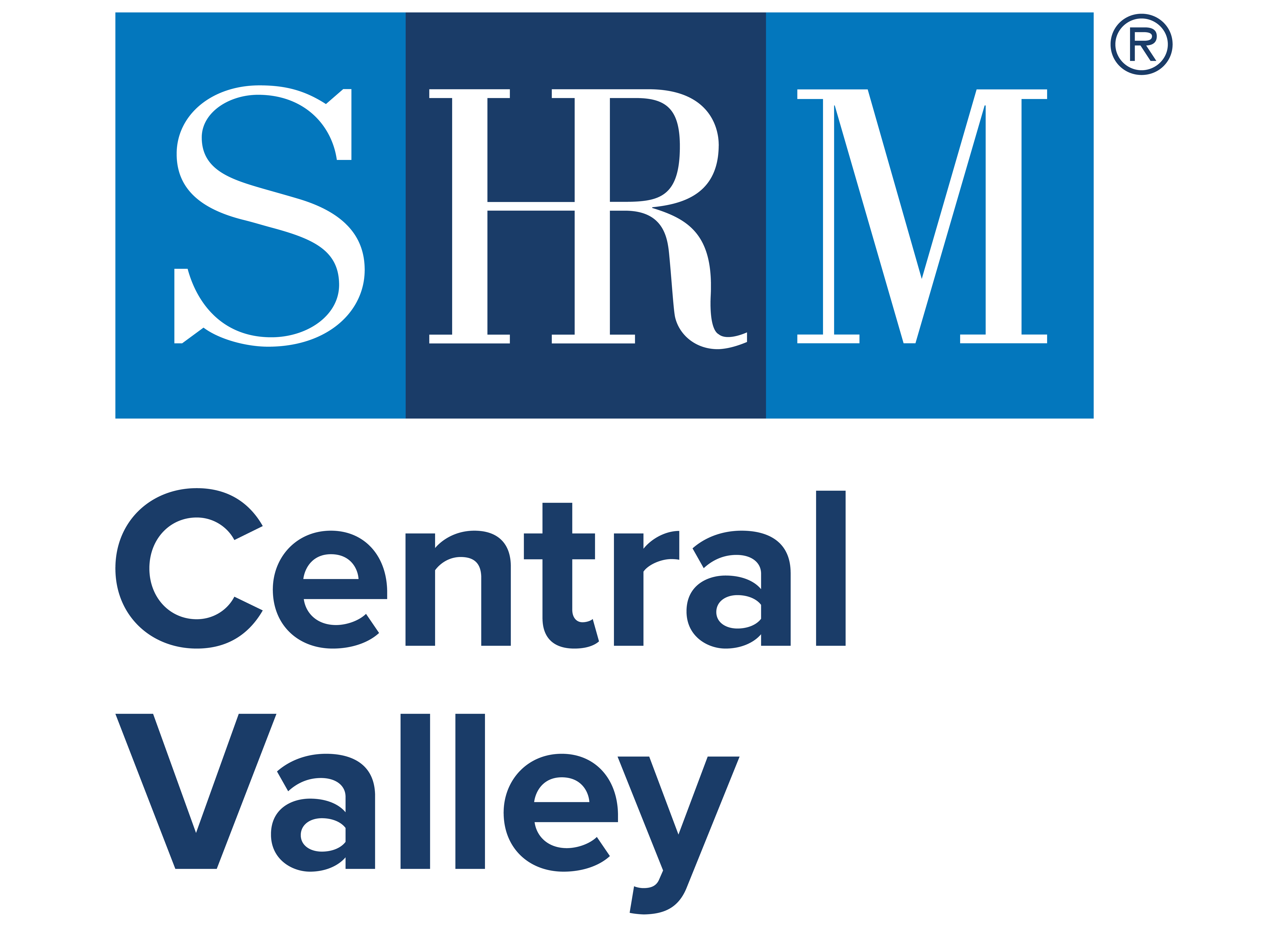Anti-Discrimination and Anti-Harassment Policy
POLICY STATEMENT
Central Valley SHRM is committed to providing all its employees and volunteers with a
workplace free from discrimination and harassment. Central Valley SHRM does not
discriminate against or allow harassment of any employee based on the employee’s race,
ethnicity, religion, color, sex, age, national origin, sexual orientation, disability, gender
identity or expression, ancestry, pregnancy, or any other basis prohibited by law, or based
on the employee’s protected activity under the anti-discrimination statutes (that is,
opposition to prohibited discrimination or participation in the statutory complaint process).
Central Valley SHRM reaffirms that it will not tolerate discrimination or harassment in any
form. This prohibition covers any discrimination or harassment in the workplace, regardless
of whether the discrimination or harassment is committed by a supervisor, officer, co-
worker or non-employee, such as a vendor, consultant, or employee or officer of an affiliate,
or invitee to a Central Valley SHRM-sponsored activity, event or meeting.
DEFINITIONS
A. Discrimination
It is discrimination for an employer to base any decision regarding the terms or conditions
of employment on an employee’s race, ethnicity, religion, color, sex, age, national origin,
sexual orientation, disability, gender identity or expression, ancestry, pregnancy, or any
other characteristic protected by law.
B. Harassment
Harassment consists of unwelcome verbal, visual or physical conduct that is based on
another person’s race, ethnicity, religion, color, sex, age, national origin, sexual orientation,
disability, gender identity or expression, ancestry, pregnancy, or any other characteristic
protected by law. It may include, but is not limited to, actions such as the use of epithets,
slurs, negative stereotyping, jokes, or threatening, intimidating or hostile acts that relate to
sex, race, ethnicity, age, disability or other protected categories. Harassment also may
include written or graphic material that denigrates or shows hostility toward an individual or
group based on protected characteristics, whether that material is sent by email; placed on
walls, bulletin boards, computer screens or other devices, or elsewhere on the premises;
or circulated in the workplace.
Unwelcome conduct can constitute harassment if:
* It has the purpose or effect of unreasonably interfering with an individual’s work
performance;
* It creates an intimidating, hostile or offensive working environment; or
* Submission to the conduct is made either explicitly or implicitly a term or condition
of an individual’s employment.
C. Sexual Harassment
Sexual harassment can involve unwelcome sexual advances, requests for sexual favors,
and other verbal, visual or physical conduct of a sexual nature. It can involve conduct by a
person of either gender toward a person of the same or opposite gender.
The following is only a partial list of sexually harassing conduct:
* Explicit sexual propositions
* Offering employment benefits in exchange for sexual favors
* Making threats or retaliating after a negative response to sexual advances
* Sexual innuendo or sexually suggestive or sexually degrading comments about a
person’s body, sex life, sexual prowess or sexual deficiencies
* Sexually oriented jokes, derogatory comments, epithets, slurs or cat calls
* Obscene language, letters, notes or invitations (including bye mail)
* Physical contact such as touching or impeding movements
* Conduct such as leering or making sexual gestures
* Displaying or distributing pornography or other sexually suggestive objects, pictures,
cartoons or posters (including by email, or viewed or shared on a work computer or
other device)
* Sexual content in text messages
Unwelcome sexual conduct can constitute harassment if:
* It has the purpose or effect of unreasonably interfering with an individual’s work
performance;
* It creates an intimidating, hostile or offensive working environment;
* Submission to the conduct is made either explicitly or implicitly a term or condition
of an individual’s employment; or
* Submission to or rejection of the conduct by an individual is used as the basis for
tangible employment actions taken toward her or him.
COMPLAINT AND INVESTIGATION PROCEDURE
As a means of ensuring a workplace that is free from discrimination and harassment,
Central Valley SHRM has established a formal procedure for the handling of discrimination
or harassment complaints. This procedure is intended to supplement—not to replace or
supersede—the other procedures available to employees and volunteers under any
applicable collective bargaining agreement, Title VII of the Civil Rights Act of 1964, the Age
Discrimination in Employment Act, the Americans with Disabilities Act, the Genetic
Information Nondiscrimination Act, or any other applicable federal, state or municipal fair-
employment-practices law, or otherwise.
A. General Principles
Central Valley SHRM strongly encourages you to come forward with a complaint at the
earliest possible point. You should not wait to report harassment until it becomes severe
and pervasive. Central Valley SHRM is committed to stopping discrimination and
harassment even if the conduct has not risen to the level of a violation of law.
If you feel comfortable doing so, you should respond to the discriminatory or harassing
conduct in a way that demonstrates that the conduct is unwelcome. However, you are not
required to complain directly to the offending individual.
Efforts will be made to investigate and resolve complaints promptly, thoroughly, impartially
and in as confidential a manner as is possible, consistent with proper investigation of the
complaint.
If a person is accused of discrimination or harassment, he or she shall not play any role in
administering or making decisions under this procedure.
If an individual is determined to have engaged in discrimination or harassment, appropriate
corrective action will be taken promptly, and appropriate sanctions will be imposed, up to
and including termination.
There will be no retaliation or other adverse action taken against any individual who makes
a complaint, reports an incident of apparent discrimination or harassment, or provides
information in the course of the investigation of such a complaint or report. Any such
retaliation also can be the subject of a complaint under this procedure. If retaliation in fact
occurred, prompt and appropriate corrective action will be taken and appropriate
sanctions imposed, up to and including termination.
B. Procedure
The procedure for dealing with complaints of discrimination or harassment is as follows:
1. If you believe that you have been the target of discrimination or harassment, Central
Valley SHRM encourages you to report the incident(s) in question as soon after the
incident occurs as possible to President@cvhrma.org , or any supervisor or
manager. If the person accused of discrimination or harassment is
President@cvhrma.org , you may submit your complaint to another officer, manager
or supervisor of Central Valley SHRM to handle the complaint. You are not required
under this procedure to complain directly to the offending individual. It is the
responsibility of any manager or supervisor who receives a complaint to inform
President@cvhrma.org of the allegations so that a prompt investigation may be
conducted.
2. The complainant shall provide President@cvhrma.org with a description of the
alleged discrimination or harassment in as much detail as possible, including a
description of what occurred and the date(s), time(s) and place(s) of the incident(s).
The complainant also should provide the names of individuals who he or she
believes have information relevant to the investigation. President@cvhrma.org may
request that this information be provided in writing.
3. Where appropriate and possible, President@cvhrma.org may attempt to resolve the
matter informally.
4. If informal efforts are not appropriate or successful, President@cvhrma.org will
conduct an investigation to determine whether discrimination or harassment has
occurred.
5. During the course of the investigation, President@cvhrma.org will inform the
individual alleged to have engaged in discrimination or harassment of the
complaint, and will give her or him the opportunity to respond to the allegations and
to submit the names of individuals who she or he believes have information relevant
to the investigation.
6. The investigation may include meeting with the complainant, the accused and other
individuals who may have relevant information. Relevant documents also may be
reviewed. The investigation will be conducted promptly, thoroughly, impartially and
in as confidential a manner as is possible consistent with proper investigation of the
complaint.
7. If necessary, Central Valley SHRM will take steps to ensure that discrimination or
harassment does not occur during the period of investigation.
8. At the conclusion of the investigation, President@cvhrma.org shall make a
determination of whether discrimination or harassment occurred.
9. If the investigation establishes that discrimination or harassment has occurred,
Central Valley SHRM will take prompt and appropriate action. This may include
corrective action designed to end and to remedy the discrimination or harassment
and to prevent it from reoccurring. Action may include imposition of discipline on
the discriminator/harasser, ranging from reprimand to discharge if that person is an
employee. If the discriminator/harasser is an employee or officer of an affiliate,
Central Valley SHRM may inform the affiliate, including the affiliate’s international,
of the investigation and findings, and request further disciplinary actions be taken by
those entities. If the discriminator/harasser is a delegate to Central Valley SHRM or
otherwise would be subject to disciplinary procedures under Central Valley SHRM
bylaws, those disciplinary procedures may be invoked. If the discriminator/ harasser
is an employee of a vendor, consultant or any other employing entity, Central Valley
SHRM may inform that employing entity of the investigation and findings, and
request further disciplinary actions be taken by that entity. Central Valley SHRM will
take all possible steps to ensure that the complainant is no longer subject to the
discrimination or harassment.
10. Central Valley SHRM will inform both the complainant and the accused of the
outcome of the investigation and, in general terms, of any measures taken to correct
the discrimination or harassment.
11. If the investigation establishes that discrimination or harassment has occurred,
President@cvhrma.org will ensure that the discrimination or harassment has not
resumed, and that neither the complainant nor any other individual has been
subjected to any retaliation for having complained of the discrimination or
harassment, reported an incident of apparent discrimination or harassment, or
provided information during the investigation.
This policy and procedure applies to all employees and volunteers.
If you have any questions about this policy and procedure, or if you want additional
information concerning complaints of discrimination or harassment, Central Valley SHRM
encourages you to contact: President@cvhrma.org
If you believe you are the target of discrimination or harassment, you also may have a right
to file a charge under Title VII of the Civil Rights Act of 1964, the Age Discrimination in
Employment Act, the Americans with Disabilities Act, the Genetic Information
Nondiscrimination Act, or other applicable federal, state or municipal fair-employment-
practices law. There are deadlines for filing charges of discrimination or harassment with
the Equal Employment Opportunity Commission, or state or municipal fair-employment-
practices agencies. Those deadlines generally run from the last date of discrimination or
harassment, not from the date the complaint to Central Valley SHRM is resolved. Contact
the EEOC or other applicable state or municipal fair-employment-practices agency if you
want more information about filing deadlines.


